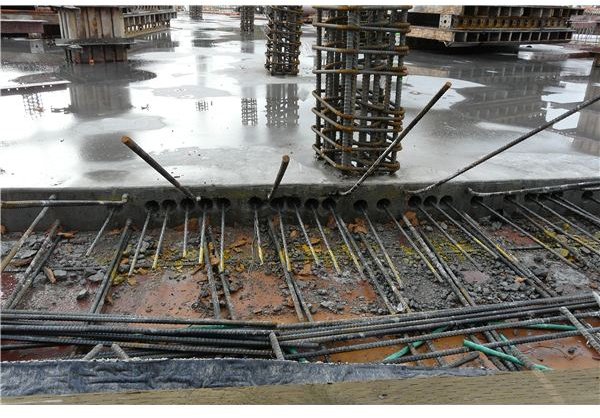In-situ Repair of Prestressed Concrete Pipe
Prestressed Concrete - Tension Free Concrete
Conventional concrete breaks down when subjected to tensile loads. Concrete is all good for countering compressive loads, but when it comes to tensile loads, the cookie crumbles and creates problems, especially for maintenance engineers. However, add few steel cables, tendons, and rods to concrete, and it is ready to handle tensile loads. Prestressed concrete has enabled construction companies to cut down their maintenance costs by huge margins because of its benefits over conventional concrete.
Image : Wikipedia
Some of the benefits of using prestressed concrete are listed below:
- Fewer deformations occur because of load distribution; even if the load is not uniformly distributed, the reinforcements take care of the load.
- Prestressed concrete is very helpful for liquid retaining structures like cylindrical water pipes because of its high shear capacity and resilience to dynamic loading conditions.
- Prestressed concrete is perfectly suitable for repetitive construction. It saves time and ensures optimum use of resources.
The only disadvantage of prestressing is high initial cost, but in the long run prestressing will definitely give better and more profitable returns than conventional concrete.
Working with Prestressed Concrete Pipes
Prestressed concrete pipes are corrosion resistant and can very well handle the back loads exerted by flowing and static water. The concrete is wrapped in prestressed wire, encased in mortar mix, and then put in the place to take care of water and pressure jolts. As the prestressed pipe has joints in it, repair of prestressed concrete pipe as well as fault finding and fixing become easy things to do.
During installation, alkaline Portland cement is used so that the reinforcement is able to resist the corrosive attack of water and chemicals. However repairing prestressed concrete pipes does need skilled experts, and here are the best practices to implement when repairing prestressed concrete pipes:
- Adverse conditions like a high sulfate or high chloride environment affect the pipes badly, so always be sure to use cathodic protection so the process of ionic disintegration is delayed. If the pipes are continuously submerged in water, the joints are affected badly. This can be repaired using Portland cement grout.
- Epoxy injection can be used to fill small cracks. In case the number of cracks is excessive, a series of holes can be dug and epoxy injection inserted into the holes with high pressure.
- Pipes start decaying in acidic environments. This can be prevented by backfilling the pipe zone with clay material or by putting in place an acid-resistant membrane.
- High tensile strength carbon fiber is the latest technology and it is effective in repairing the damaged parts of the pipes. Carbon fiber polymer wrap helps in refinement of damaged concrete by wrapping it in a shell of pressure bearing coat of carbon fiber. It also acts as a seismic cover for the pipes and helps in improving ductility and compressive strength of concrete.
- Shotcreting is another effective way of repairing those parts that are at weird angles or cannot be reached by hand alone. Concrete mixed with waterproofing material is thrown at the damaged parts at high pressure and minor cracks can be filled using this technique.
- Identification of corroded tendons is important because if the pipe is too long then corrosion of the tendons may result in failure of the pipe. Echo testing and borescope testing helps in identifying corroded tendons.
- Ensure insulation of any open or exposed areas because corrosion or rust is contagious; it spreads from one member to another. Insulating materials act as sacrificial coatings and allow the main structure to have longer life.
Monitoring is the Key
Prestressed concrete is an expensive construction material. If it is not monitored continuously, pipes underneath the surface of the earth or in regular contact with water will definitely be affected because of the chemical reactions happening beneath the surface. Monitoring the pipes, water, and soil for pipeline potential, stray current interference, and acidic properties of the soil is very important. If the abnormalities are observed in time, only then will repair works be effective. Minimizing risk is one thing that can be achieved by constant monitoring of the pipes.
References
Prestressed Concrete Structures, IITM(pdf)
Sourcebook of Alternative Technologies for Freshwater Augmentation in West Asia, UNEP
External Protection Of Concrete Cylinder Pipe, ACPPA.Org(pdf)
